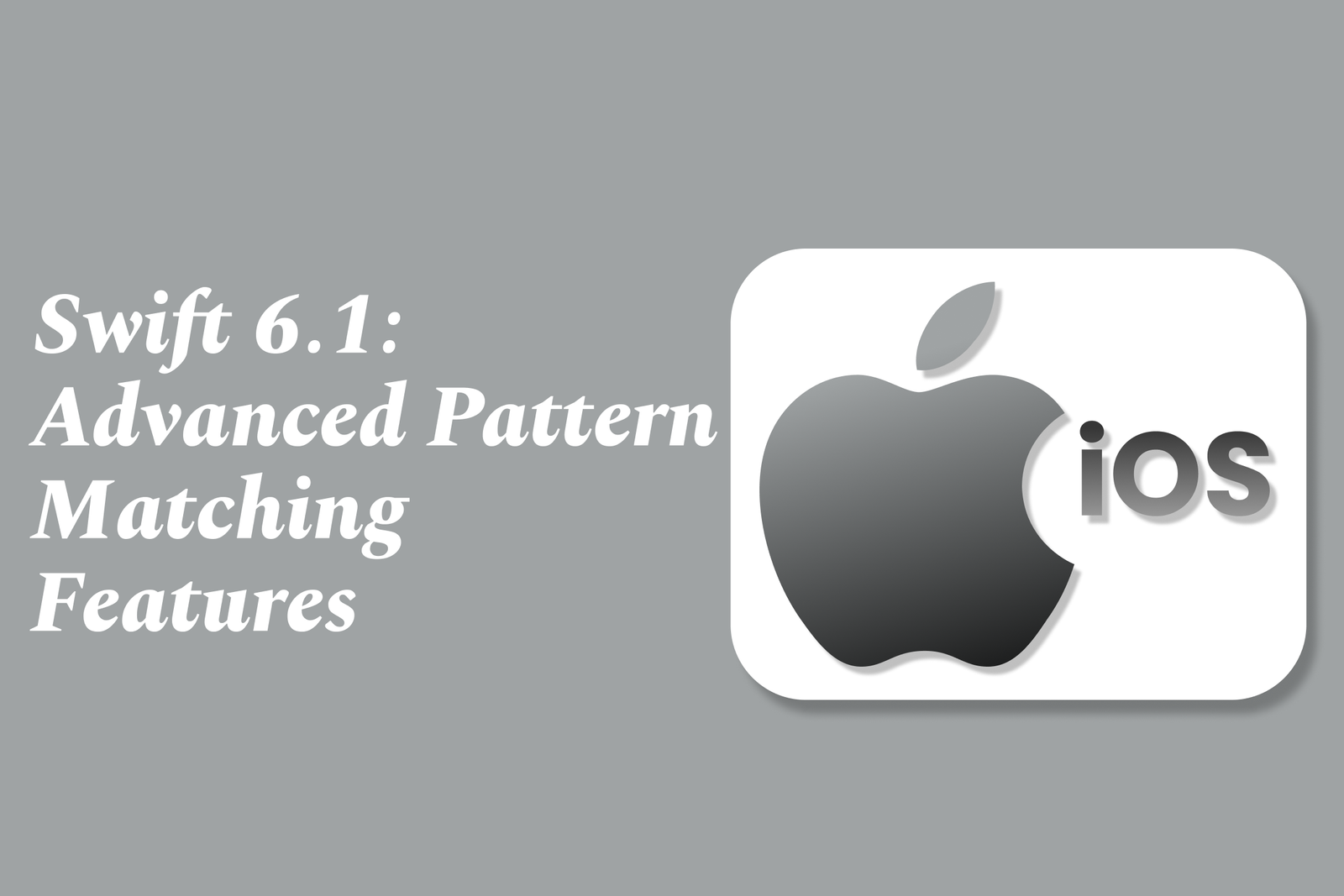Swift 6.1: advanced pattern matching features
Swift 6.1 introduces advanced pattern matching features that enhance code clarity and safety by supporting noncopyable generics, move-only types, and refined ownership models, enabling developers to write more efficient, resource-safe, and expressive Swift code.
Swift 6.1: Advanced Pattern Matching Features
1 ) Introduction to Noncopyable Generics in Swift
Swift 6.1 introduces advanced features around noncopyable generics that enhance performance and safety.
These new generics are designed to be non intrusive, activated only when required.
Noncopyable generics enable libraries to manage resources more efficiently by avoiding unnecessary copying of data.
2 ) Background and Evolution
The feature has been evolving through Swift’s official evolution proposals, notably SE 0427.
Early discussions highlighted some confusion around concepts such as `~Copyable`.
Recent toolchain improvements now support pointers and optionals of noncopyable types, helping developers experiment with these features.
3 ) Practical Example: Building a Singly Linked List
To demonstrate these new generics, a linked list implementation leveraging noncopyable generics was developed.
This approach parallels concepts found in Rust's ownership model.
The example uses a `Box` type to provide safe and efficient heap indirection without reference counting, using `UnsafeMutablePointer` internally but hiding its unsafety.
4 ) Key Features of the Box Type
Declared as a struct with `: ~Copyable`, opting out of default copyable behavior.
Supports a destructor (`deinit`), which is possible because the struct is noncopyable.
Prevents accidental copies by enforcing move semantics – when a Box goes out of scope, its `deinit` safely cleans up resources.
This pattern can serve as a foundation for noncopyable data structures in Swift's standard library.
5 ) Using Experimental Features
To use noncopyable generic features, developers must enable experimental flags (`NoncopyableGenerics`, `MoveOnlyPartialConsumption`, `BorrowingSwitch`) in their toolchain or Xcode.
The features are in active development, and the Swift compiler with these features can produce debug assertions, so developers are encouraged to report bugs with reproducible examples.
6 ) Broader Context: Swift 6 Concurrency and Typed Throws
Swift 6 also brings improvements in concurrency, enabling complete concurrency safety by default with fewer false positives.
A new “typed throws” mechanism allows functions to specify the exact error type thrown, enhancing error handling precision.
Ownership and memory management in Swift 6 have matured to support both copyable and noncopyable types seamlessly.
7 ) Implications for Developers
Advanced pattern matching and ownership features in Swift 6.1 unlock performance optimizations and safer code designs especially for resource intensive applications.
Developers interested in systems level and low level programming will find Swift 6.1 a compelling upgrade.
These features align Swift closer to languages like Rust in terms of ownership and safety guarantees.
Summary
Swift 6.1 enhances the language with advanced noncopyable generics to support efficient and safe resource management. Through new language constructs and experimental features, Swift empowers developers to write performant, ownership aware code, exemplified by practical data structures like singly linked lists that embrace move semantics without overhead. Alongside concurrency and error handling improvements, Swift 6.1 represents a significant step in evolving Swift as a robust language for modern, high performance applications.
https://justacademy.in/news-detail/how-react-native-is-powering-the-next-generation-of-desktop-apps
https://justacademy.in/news-detail/flutter-ux-design-tips-in-2025
https://justacademy.in/news-detail/flutter-adds-ai-toolkit:-what-it-means-for-developers
https://justacademy.in/news-detail/flutter-ai-sdk-vs-traditional-ml-kits
https://justacademy.in/news-detail/react-native?s-performance-gains-on-android-15
Related Posts
Java supports GDPR and data privacy by enabling secure data handling through encryption, controlled access, and precise data management. It allows developers to minimize PII exposure, ensure data confidentiality, and design workflows that comply with data protection regulations effectively.
Java code quality tools have evolved to include advanced static analysis, integrated security checks, and AI-powered code reviews. These updates help developers detect bugs, enforce coding standards, and enhance security, streamlining the development process and improving overall code reliability.
Java remains a cornerstone in big tech companies, evolving with modern features like records, pattern matching, and virtual threads. Its robust ecosystem, enhanced performance, and growing AI integrations keep it vital for both legacy systems and innovative new projects.
Java and CI/CD pipeline optimizations streamline Java application development by automating builds, tests, and deployments. They improve efficiency through parallelization, caching, and secure secrets management, enabling faster feedback loops and more reliable, scalable software delivery.
Java supports modern cryptography standards through its flexible Java Cryptography Architecture (JCA), enabling integration of advanced algorithms like AES, EdDSA, and post-quantum tools. Libraries like Bouncy Castle offer FIPS-certified, hardware-accelerated implementations for secure development.
Java 23 enhances record patterns by enabling concise, direct destructuring of record components within pattern matching, simplifying type checks and data extraction. This improvement boosts code readability and expressiveness by reducing boilerplate in handling immutable data classes.
Java remains a top choice for mobile app backends, powering scalable, secure, and high-performance server-side solutions. Latest trends include cloud-native microservices, reactive programming, and enhanced JVM optimizations, enabling efficient, flexible, and robust mobile backend development.
Java SE 24 and LTS Java SE 21 offer enhanced features and performance, while Apache Spark 4.0.0 introduces Scala 2.13 support and advanced ML and SQL capabilities. Together, they empower developers to build scalable, high-performance data applications with modern tools.
JUnit 5 modernizes Java testing with a modular architecture, improved assertions, and seamless Java 8+ support. Beyond JUnit, tools like Mockito and AssertJ enhance mocking and assertions, creating a powerful, flexible ecosystem for writing clean, efficient Java unit tests.
Java plays a pivotal role in cloud automation tools by providing a robust, platform-independent language used to build scalable automation frameworks like Jenkins and Selenium, enabling efficient CI/CD pipelines, testing, and orchestration across diverse cloud environments.










